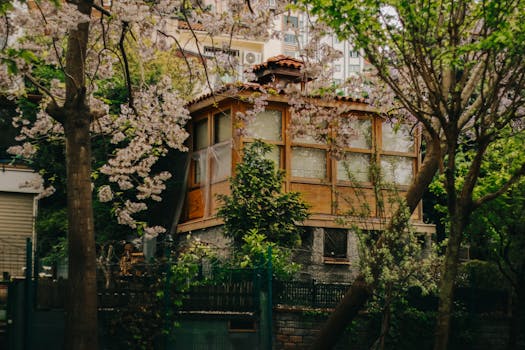
Urban Green Spaces: The Future of Outdoor Living in European Cities by 2025
Urban Green Spaces: The Future of Outdoor Living in European Cities by 2025 is a concept that has gained significant attention in recent years. As the world becomes increasingly urbanized, the need for green spaces in cities has become more pressing. Urban green spaces are not just limited to parks and gardens; they can include green roofs, walls, and even urban forests. These spaces provide numerous benefits, including improving air quality, reducing noise pollution, and enhancing biodiversity.
Introduction to Urban Green Spaces
Urban green spaces are areas of vegetation in and around urban environments. They can range from small gardens and parks to large urban forests and green corridors. These spaces are essential for maintaining ecological balance and providing recreational areas for urban residents. Urban green spaces also play a crucial role in mitigating the urban heat island effect, which is a significant concern in many European cities.
In recent years, there has been a growing recognition of the importance of urban green spaces in European cities. Many cities have launched initiatives to create and restore green spaces, and there is a growing body of research on the benefits and challenges of urban green spaces. This article will explore the current state of urban green spaces in European cities and how they will shape the future of outdoor living by 2025.
Benefits of Urban Green Spaces
Urban green spaces provide numerous benefits, including:
- Improved air quality: Urban green spaces can help reduce air pollution by absorbing pollutants and producing oxygen.
- Reduced noise pollution: Urban green spaces can act as a buffer against noise pollution, creating a more peaceful environment for residents.
- Enhanced biodiversity: Urban green spaces can provide habitats for urban wildlife, supporting local biodiversity and ecosystem services.
- Recreational areas: Urban green spaces provide areas for recreation, relaxation, and socialization, improving the quality of life for urban residents.
- Climate change mitigation: Urban green spaces can help mitigate the urban heat island effect, reducing the need for air conditioning and other cooling measures.
These benefits are essential for creating sustainable and livable cities. By incorporating urban green spaces into urban planning, cities can improve the health and well-being of residents, while also reducing their environmental footprint.
Challenges and Opportunities
Despite the numerous benefits of urban green spaces, there are also challenges and opportunities to consider. Some of the challenges include:
- Limited space: Many European cities have limited space available for green spaces, making it essential to prioritize and optimize the use of existing spaces.
- Funding: Creating and maintaining urban green spaces can be costly, requiring significant investment from municipal governments and private stakeholders.
- Community engagement: Urban green spaces require community engagement and participation to ensure their success and sustainability.
However, these challenges also present opportunities for innovation and creativity. By leveraging new technologies and community-led initiatives, cities can create and maintain urban green spaces that are not only sustainable but also resilient and adaptable to changing urban environments.
Case Studies and Examples
There are many examples of successful urban green space initiatives in European cities. Some notable examples include:
- The High Line in New York City: An elevated park built on an old rail line, providing a unique green space in the heart of the city.
- The Gardens by the Bay in Singapore: A large urban park featuring stunning gardens and green spaces, showcasing the potential for urban green spaces in dense cities.
- The green roofs of Chicago: A city-wide initiative to create green roofs, providing insulation, reducing stormwater runoff, and creating habitats for urban wildlife.
These examples demonstrate the potential for urban green spaces to transform cities and improve the quality of life for residents. By learning from these examples, European cities can create their own urban green spaces that are tailored to their unique needs and contexts.
Conclusion and Future Directions
In conclusion, urban green spaces are essential for creating sustainable and livable cities. By prioritizing the creation and maintenance of urban green spaces, European cities can improve the health and well-being of residents, while also reducing their environmental footprint. As we look to the future, it is essential to continue innovating and adapting urban green spaces to meet the changing needs of urban environments.
By 2025, we can expect to see even more innovative and sustainable urban green spaces in European cities. With the rise of green infrastructure, urban forestry, and community-led initiatives, the future of outdoor living in European cities looks bright. As we continue to urbanize, it is essential to prioritize the creation and maintenance of urban green spaces, ensuring that our cities remain livable, sustainable, and resilient for generations to come.






